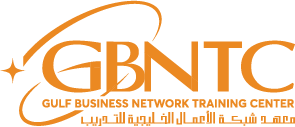Optimal climate management is key for modern enterprises aiming to enhance eco-friendliness and operational efficiency. Well-executed maintenance strategies play a decisive role in the longevity and performance of climate systems, impacting both energy consumption and occupant comfort. By integrating advanced technology within building design, organizations can significantly reduce their carbon footprints while maximizing productivity.
Adopting sound operational practices not only boosts the performance of climate equipment, but also creates a healthier atmosphere for employees and clients alike. By prioritizing systematic upkeep and considering innovative approaches, businesses can successfully navigate challenges associated with environmental responsibilities and resource management.
Evaluating Energy Consumption of HVAC Solutions in Non-Residential Environments
Assessing energy consumption of climate control solutions is paramount for maximizing efficiency in non-residential spaces. By leveraging renewable integrations and updated technologies, facilities can significantly reduce their operational costs and environmental impact. Real-time monitoring and analytics can help pinpoint areas where energy usage can be optimized.
Chase the jackpot at https://buddykingplumbing.com/ and stand a chance to win big.
Effective operational practices play a significant part in minimizing energy waste. Scheduling maintenance, implementing smart controls, and ensuring proper building design can lead to substantial energy savings. Additionally, achieving green certifications motivates stakeholders to adopt financially prudent measures.
System upgrades, such as high-efficiency units or advanced building automation systems, can markedly decrease energy consumption. However, the integration of these upgrades requires a deep understanding of existing infrastructure and future needs. Engaging occupants through awareness campaigns can further enhance energy efficiency, ensuring everyone contributes to the facility’s goals.
Continuous evaluation and adaptation of energy strategies are essential for maintaining low consumption levels. By fostering collaboration among facility managers, design teams, and occupants, organizations can create a culture of sustainability that benefits both the environment and the bottom line.
Integrating Renewable Energy Sources with HVAC Solutions
Incorporating renewable integrations into climate control frameworks promotes energy efficiency and reduces environmental impact. Options like solar panels, geothermal systems, and wind turbines provide sustainable energy sources, minimizing reliance on traditional power grids. By adopting these methods, businesses not only lower their energy consumption but also position themselves favorably for green certifications.
Aligning operational practices with renewable technologies necessitates a strategic approach to maintenance strategies and potential upgrades in building design. This integration enhances occupant engagement by creating comfortable environments powered by clean energy. For detailed insights on improving plumbing and energy systems, visit https://buddykingplumbing.com/.
Balancing energy inputs with smart climate management allows organizations to maximize resource usage while cultivating a commitment to sustainability. Establishing strong connections between renewable energy sources and climate control facilitates innovative approaches to reducing carbon footprints, making a positive contribution to the planet.
Implementing Smart Technology for HVAC Optimization
Integrating intelligent solutions into climate control mechanisms fosters energy efficiency and enhances performance. Advanced technology enables precise monitoring and adjustment of environmental conditions, driving down energy consumption in various settings. By utilizing smart thermostats and sensors, facilities can optimize temperature and humidity levels based on real-time data, minimizing waste and maximizing occupant comfort. For more insights on enhancing energy efficiency, visit this resource.
Renewable integrations further amplify the benefits of modernized climate control strategies. Pairing intelligent systems with solar panels or geothermal energy sources can significantly reduce reliance on conventional power grids. Engaging space occupants in energy-saving practices through user-friendly interfaces also cultivates a culture of sustainability. Encouraging participation in conservation efforts aids in achieving green certifications that demonstrate commitment to environmentally responsible practices.
Regular system upgrades are paramount for maintaining optimal operation, as outdated technology can lead to excessive energy use. Implementing robust maintenance strategies ensures longevity and efficiency. Tailored operational practices, aligned with current standards, enhance performance while keeping environmental impact low. By focusing on these areas, organizations can establish a foundation for a sustainable future while balancing cost-effectiveness and ecological responsibility.
Assessing Indoor Air Quality and Its Impact on Sustainability
Indoor air quality (IAQ) plays a pivotal role in creating a sustainable indoor environment. Ensuring high IAQ not only improves occupant health and comfort but also contributes to energy efficiency. Consider exploring resources on indoor air quality to understand its significance in commercial settings. Effective ventilation and filtration systems are vital for maintaining optimal IAQ, impacting overall energy consumption and occupant productivity.
Advanced building design approaches must integrate strategies that prioritize air quality. Innovative technologies such as air quality monitors enable real-time assessments, promoting occupant engagement. By educating occupants about the impact of their behaviors on air quality, buildings can foster healthier living and working environments. Green certifications often emphasize IAQ, providing a framework for organizations aiming to enhance their environmental footprint.
- Regular maintenance strategies are critical for ensuring air quality remains at optimal levels.
- System upgrades, including the integration of advanced filtration technologies, can significantly improve the efficacy of ventilation systems.
- Renewable integrations, such as utilizing heat recovery ventilators, can enhance both energy efficiency and air quality.
- Incorporating plants into indoor spaces can also contribute positively to air purification.
Monitoring and assessing IAQ require a comprehensive approach that includes ongoing evaluations and adjustments. This proactive method not only bolsters occupant satisfaction but also aligns with broader sustainability goals. Balancing energy consumption with IAQ requirements ensures that both the environment and the people who inhabit these spaces thrive together.


Comments are closed